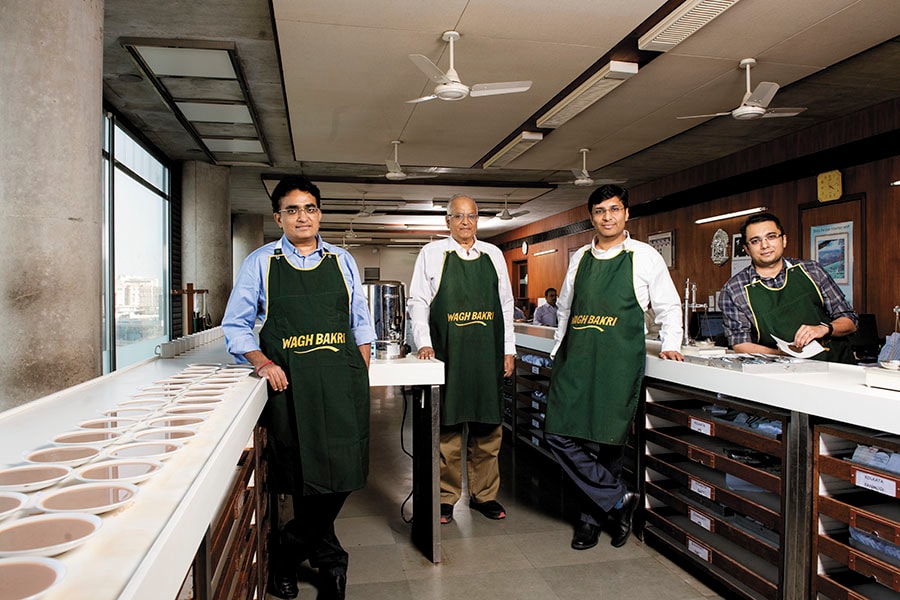
Wagh Bakri: The good blend
Wagh Bakri tea has earned a name to rival the biggies in the business by focusing on regional tastes and cautious growth
Image: Mexy Xavier From left: Parag Desai, executive director, Gujarat Tea Processors & Packers Ltd; Rasesh Desai, managing director, and Paras Desai, executive director, with Priyam Parikh, whole-time director
From left: Parag Desai, executive director, Gujarat Tea Processors & Packers Ltd; Rasesh Desai, managing director, and Paras Desai, executive director, with Priyam Parikh, whole-time director
"Our tea is packed only after the directors have tasted every sample, based on their colour, strength, taste and briskness,” says Parag Desai, executive director, Gujarat Tea Processors & Packers Ltd (GTPPL), as he runs his fingers through processed tea leaves, like a jeweller caresses his finest pearls.
We are at the Tea Tasting Department of the company’s headquarters in Ahmedabad. About 50 saucers of milky tea are neatly arranged on a counter. On a parallel counter, small weighing scales sit next to sachets of tea samples to be shortlisted for purchase from auctions. Parag, as the head of sales, marketing and international business, knows well that quality means everything in the “high volumes, low profits” tea business.
His father Rasesh, 72, managing director of GTPPL, is as vigilant. “My grandfather and uncles were passionate about quality, customer satisfaction and the brand value,” he says. And that’s why he, like every director of the company, tastes around 400 to 500 samples of tea every day, customising the blend according to the milk and water of the region to which it would be supplied.
For a company that has humble beginnings, passes on profits to consumers, and expands in one or two states at a time, it is perhaps this obsession with quality that has made Wagh Bakri India’s third-largest packaged tea company, with an annual sales turnover of ₹1,100 crore in 2016-17, and 42 million kg in volumes.
(This story appears in the 30 November, -0001 issue of Forbes India. To visit our Archives, click here.)





